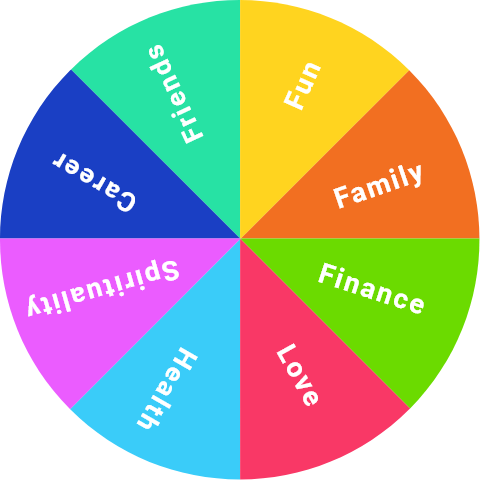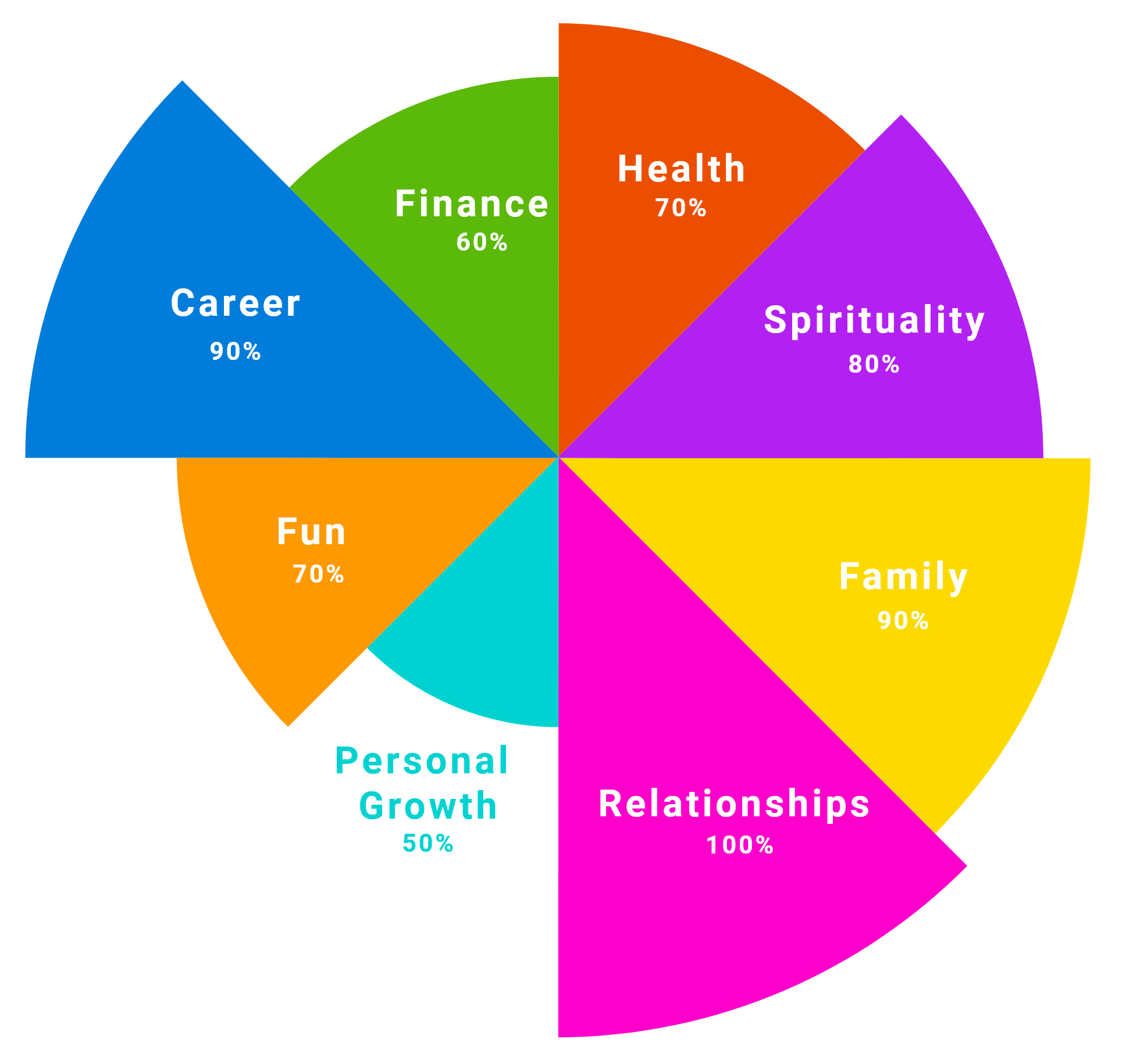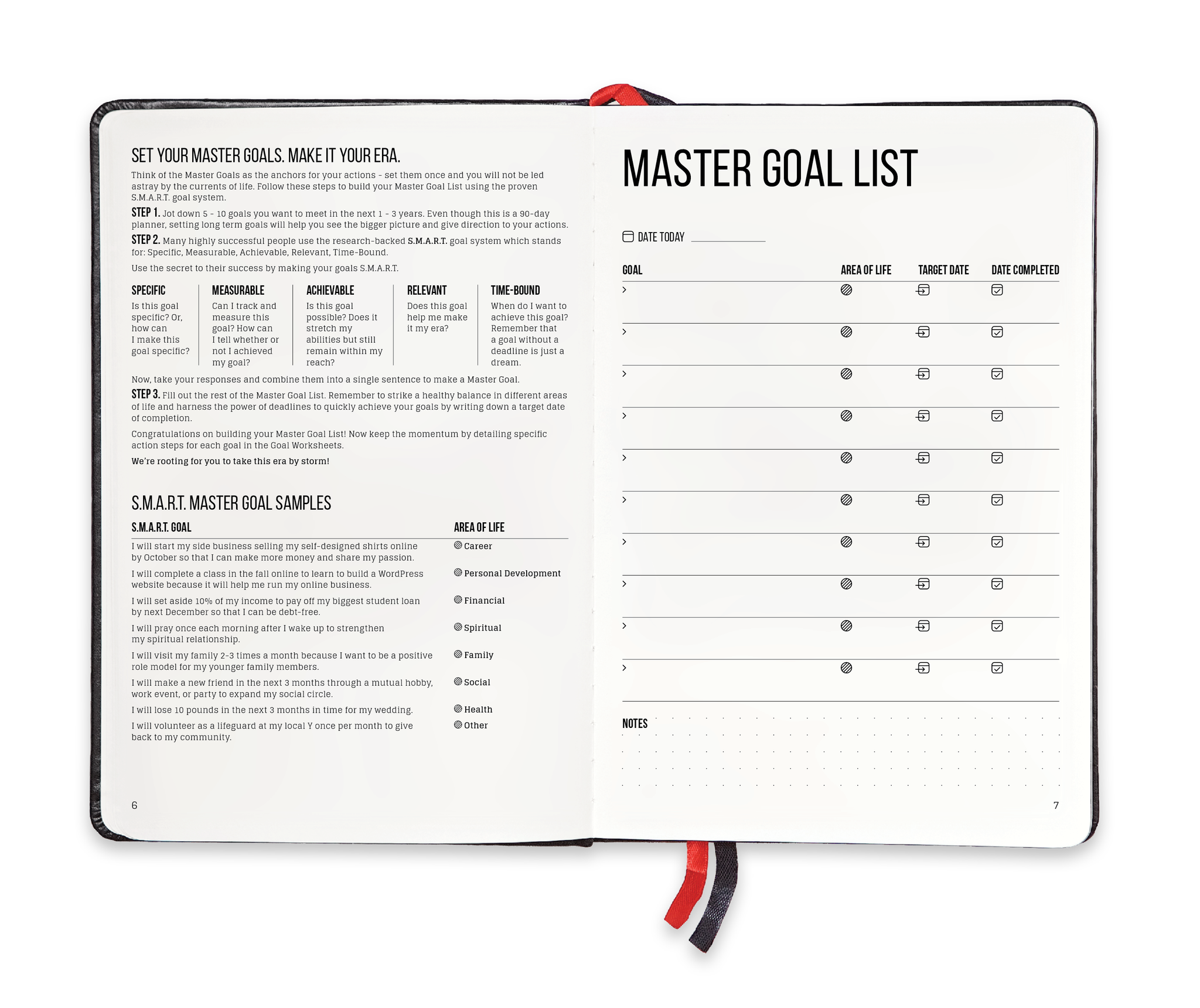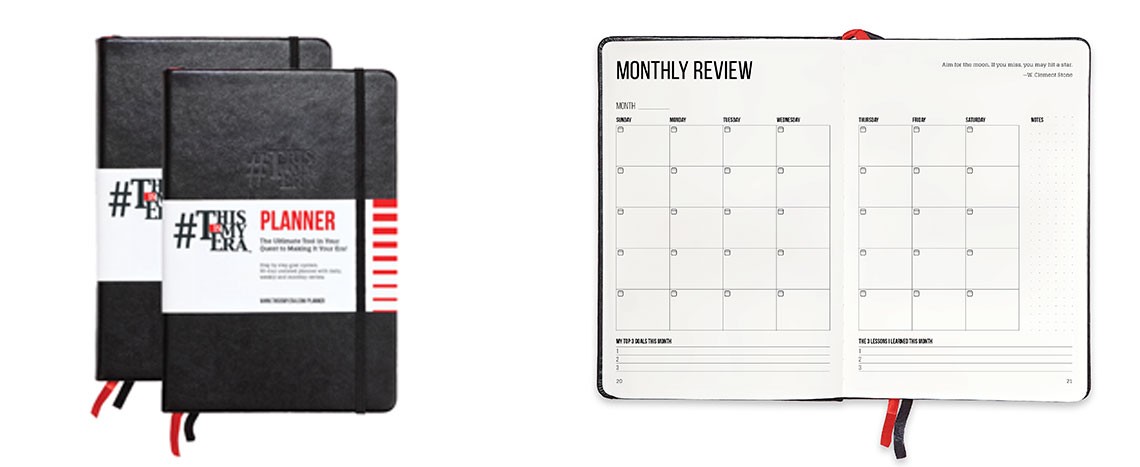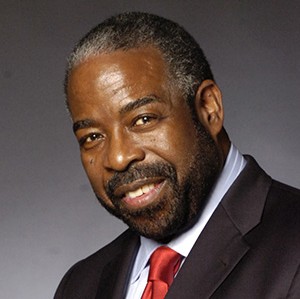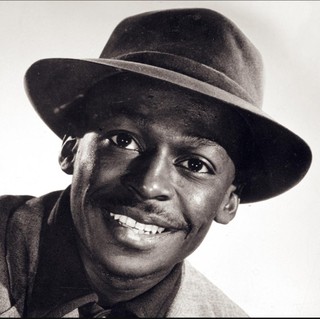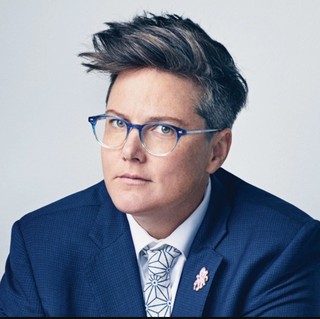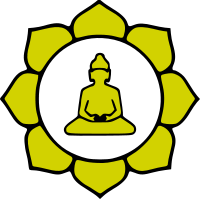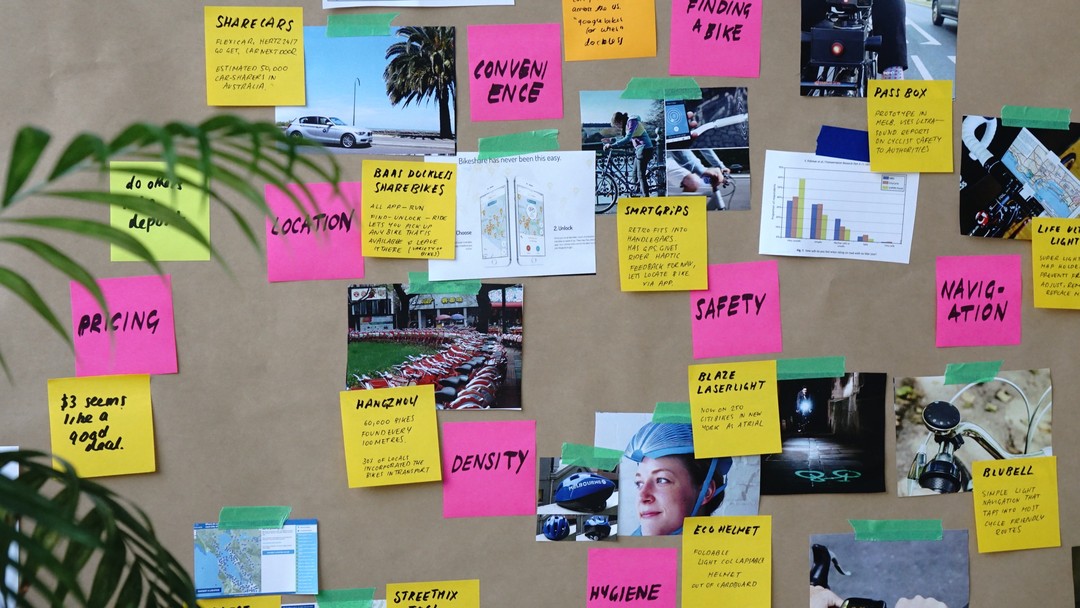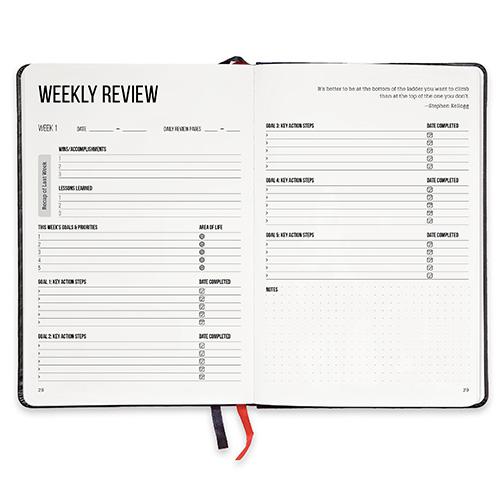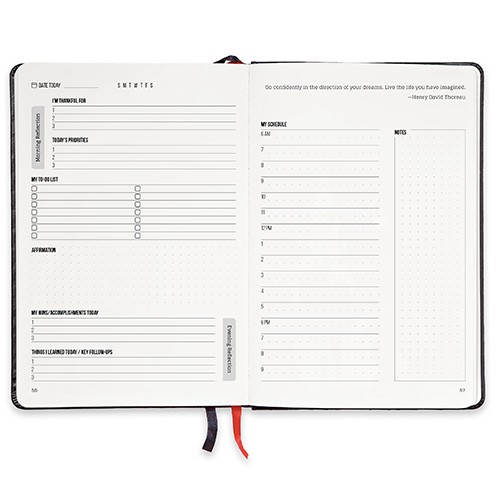Learn to Live an Intentional Life
and Unlock Your Potential
Have You Found Your “Why?”
What does it mean to live an intentional life? While the lifestyles of those who adopt this practice can appear quite different on the surface, underneath they are connected by the same motivation: to live a life that is aligned with their values and beliefs. Living a life of intention is a choice; it’s a choice to make decisions in accordance with to your fundamental values and beliefs. It’s not about what you’ve done in the past, nor is it about knowing exactly how to shape your future--it’s about the decisions you make right now. In the story of an intentional life, the what, where, when, and how of it are all determined by one simple yet profound question: why?
Popularized by author Simon Sinek’s 2009 TEDTalk, How Great Leaders Inspire Action explains what he calls “the world’s simplest idea,” which he calls The Golden Circle.
Simon Sinek's Golden Circle
At the center of the circle is “why.” Why do you do what you do? Just outside “why” is“how.” How do you do it? And on the outer rim of the circle is “what.” What do you do? Most organizations, says Sinek, think act and communicate from the outside of the circle and move their way in: This is what we do, this is how we do it. Leaders and organizations who inspire, he posits, think, act, and communicate from the inside and move their way out: this is why we do what we do, this is how we do it, and this is what it is.
The conclusion he draws is that, to inspire, you have to start with why. When you live an intentional life your why is your compass. Within your why are your values--the things that are most important to you and which drive you. By building a life around your values and beliefs, you create a world in which you know what is driving your actions. There’s no escaping the ups and downs that come with our world, even when you choose your actions intentionally. With your values serving as your North Star, however, you can find meaning in all of life’s mountains and molehills.
Values
Values can shift, change, and grow deeper throughout your lifetime, so living an intentional life is a process. It begins with taking an honest assessment of your beliefs and values, and identifying those which are most important to you.
Sample Value List
Discovery
Peace
Generosity
Service
Partnership
Passion
Community
Honesty
Fairness
Authencity
Growth
Wisdom
After you’ve identified your core values, you can begin to take stock of how your current life aligns with them, and look at the changes you may want or need to make in order to return to the path you’ve chosen.
Regain Your Balance with the Wheel of Life
The Wheel of Life is a simple tool for finding balance that is often used by professional coaches and others in the field of personal development. A circle is split into eight sections, as pictured above, with each section representing a different area of your life. The sections of the wheel can be renamed, changed, or split in any way necessary for each person so that it represents each individuals’ vision of what a meaningful and balanced life looks like. Completing the Wheel of Life exercise can serve as an excellent exercise to help you identify where you are expending energy in your life. After identifying what your current energy dispersion looks like, the wheel can be used periodically throughout your year tore-assess your progress in cultivating a balanced, intentional life.
How to Use the Wheel of Life
Imagine ten imaginary points on each spoke of the wheel. Starting at the center of the wheel (numbered 0) and working your way out to the outer circle (10) plot a point in each section that represents your satisfaction with each area of your life.
Next, draw a line across each section that corresponds with its plotted point. The new perimeter represents your “Wheel of Life” and can show you where you are lacking the desired balance.
What Is Your Wheel Telling You?
Often when we are feeling stressed, overwhelmed, or directionless, we look outside of ourselves to bring about change. The trouble with this sort of externalized focus, of course, is that our external world is not entirely within our control. The results of this approach generally turn out to be little more than a bandage that masks what really ailsus. Using the Wheel of Life, we are called to look at where we are focusing our energy. To create the balance we seek, we need to refocus our energy on the things that we value, rather than looking for someone or something else to bring it about. Balance is personal and unique to each individual--what feels satisfying and balanced to one person can feel stressful or boring to another. There is no “perfect” result when completing the Wheel of Life, it simply reflects your current reality and helps you assess where your actions are not aligned with your values. Balance must also be assessed over time, and should include regular check-ins so you can identify the patterns that are (as well as those that are not) serving you. You'll notice that you require a different kind of balance at different stages in your life. When you are saving to buy a new home, for example, you may place higher value on your finance and career sectors than you would at other stages of life. With your Wheel of Life showing you where you’re living out of balance with your values, you have the insight you need to set goals that will have a meaningful impact on your life.
Create Your Own Wheel of Life
Answer our quick questions & download your own Wheel of Life
Get SMART About Your Goals
Setting goals is about more than simply deciding what you want to do. When you set goals for yourself according to your values, you’ll find yourself more driven to accomplish them. Just as importantly, you’ll find that the actions you take to achieve your goals are nearly as impactful and meaningful as achieving success.
Knowing the why and what of your goals is a start, but you need a plan to get you from where you are to where you want to be. That’s where SMART goal setting comes in. The smart in SMART goals stands for:
Make Your Goals Specific
What does it mean to have a specific goal? When you make your goals specific, you are identifying the result you want to achieve and clearly stating what achieving your goal will look like. Imagine you’re standing in the middle of the field. You’re handed a bow and arrow and told to shoot at the target. You look out into the field, expecting to see a target, and instead you see nothing but the grass and sky. You know the target is out there somewhere, so you start shooting arrows in every direction, hoping at least one will hit its mark. This is what it’s like when you try to achieve a goal that isn’t specific. Now start back at the beginning. You’re handed a bow and arrow and told to shoot at the target. First, however, the target is described to you, so you know you’re looking for a bullseye. Then, you’re given archery lessons. A helpful coach reviews the basics with you, and then provides you with personalized feedback after each attempt so you can improve with every shot.. Now you not only know what you’re aiming for, but you have the skills to increase your accuracy with each new attempt. This second scenario demonstrates the value of having a specific goal. With a specific goal, you have the skills and knowledge you need to hit the target. Instead of shooting arrows blindly into a field, you can take aim at precisely what you want and feel confident that you’ll attain it.“I want to write a novel,” is not specific. What kind of novel do you want to write? How long will it be? Does your goal include revising your novel, or merely writing it? After answering these questions, your new goal would be restated as, “I want to complete writing the first draft of a literary fiction novel that is at least 70,000 words.”By setting specific goals, you are giving yourself time to review your choices and ensure they are in line with your values and intentions. This clarity also helps to ensure that you have the skills and tools that you need to achieve them.
Specific = I want to write the first draft of a literary fiction novel.
Make It Measurable
Making your goals measurable gives you a way to track your progress. When measuring your progress, it’s important to track things that are in your control. This means that your measurement should be something that you are responsible for doing, and which does not rely on anything other than your efforts. Using the example above of writing a novel, you might measure your progress by the time you spend writing every day, or the number of words or pages you complete each day. Both of these measurements are driven solely by your actions. Measuring your actions in this way also gives you the opportunity to reassess your goals at regular intervals. If you’re not seeing measurable progress, it can serve as a sign that you need to revisit one or more parts of your goal.
Specific + Measurable = I want to write the first draft of a literary fiction novel that is at least 70,000 words. I will make progress towards my goal by writing every day, and will track the number of hours I have written in my goal planner.
Make It Achievable & Assign Actions
The actions you identify and commit to taking should directly relate to your goal and, as discussed above, they should be measurable. By assigning actions to your goal, you are drawing the map that will get you from your why to your what by answering the question: how? How shifts you from planning into doing. There may be a complete list of separate actions you’ll need to take between starting and achieving your goal, and you may need to add to this list as you encounter obstacles or learn new information. Action is about more than just attaining results, it’s about ongoing learning. If an action isn't moving you toward your goal, you don't need to follow it blindly. Treat your goals flexibly: if you find that you don’t have the necessary resources to complete an action on your list, you can add tasks that will keep you on the path to success.
Specific + Measurable + Achievable= I want to write the first draft of a literary fiction novel that is at least 70,000 words. I will make progress towards my goal by writing for least one hour every day, and will track these hours in my goal planner. I will re-assess my progress once a week to identify any obstacles or course corrections that are needed, and update my master goal plan as necessary.
Make Your Goals & Actions Relevant
The R in SMART stands for Relevant. This step ties your goal to your why, and applies both to your actions and to your goals themselves. Relevant actions are those from which you can draw a clear line to your desired end result. For example, writing every day will lead to a completed novel. Relevant goals are those which align with your deeply held values and beliefs. Writing a novel may be tied to your value of creativity, for example. If the link between your goal and your beliefs isn’t immediately apparent, that doesn’t mean it’s not a relevant goal. You can dig deeper into your motivations by asking “the five whys.”
Why #1:
Why do I want to achieve this goal? Because I’ve always wanted to be an author.
Why #2:
Why have I always wanted to be an author? Because I’ve always enjoyed writing and the process of creating something new and nurturing it to life
Why #3:
Why do I enjoy writing? Because I get to express myself through storytelling.
Why #4:
Why is it important to express myself through storytelling?
Why #5:
Why do I want to make people laugh and view their world in a different light? Because I value growth and community, and I believe that storytelling and laughter are the best tools I have to foster growth in my community.
I love to make people laugh and to see the world differently. Storytelling has always allowed me to do so. Why #5: Why do I want to make people laugh and view their world in a different light? Because I value growth and community, and I believe that storytelling and laughter are the best tools I have to foster growth in my community.
Specific + Measurable + Achievable + Relevant = I want to entertain my community while fostering growth and learning, and writing is a skill that allows me to do this. I want to write the first draft of a literary fiction novel that is at least 70,000 words. I will make progress towards my goal by writing for at least one hour every day, and will track these hours in my goal planner. I will re-assess my progress once a week to identify any obstacles or course corrections that are needed, and update my master goal plan as necessary.
Tie Your Actions to Time
By making your goals time-bound, you are giving yourself clear parameters for when you'll achieve it. You can view this as a deadline, but it should also contain milestones along the way so you can celebrate your success. You can choose to assign rewards to each milestone, or merely use them to reflect on the behaviors that have helped as well as any obstacles you have encountered.
Specific + Measurable + Achievable + Relevant + Time-bound = I want to entertain my community while fostering growth and learning, and writing is a skill that allows me to do this. I want to write the first draft of a literary fiction novel of at least 70,000 words by December 31, with milestones set at 17,500 and 35,000 words. I will make progress towards my goal by writing for at least one hour every day. I will track these hours in my goal planner and keep a running word count to ensure I am on track to meet my goal of at least 5833 words per week. I will re-assess my progress once a week to identify any obstacles or course corrections that are needed, and update my master goal plan as necessary.
Get Inspired!
Listen to This is My Era founder, Kuda Biza tell his story of taking massive action in support of his goals.
Practicing Gratitude & Reflection
Making time each day to be grateful for and reflect on what you’ve learned is an often overlooked habit that can help you achieve your goals. How? Daily reflection and gratitude help you to put the day’s events in perspective. At first, you may need to dig into your obstacles to uncover the lessons in them. Over time, however, you’ll have developed the patience and insight to see the value in obstacles as soon as they occur--and perhaps to no longer see them as obstacles at all!
Well, That Happened
In the video below, Herbie Hancock recalls a powerful story about Miles Davis. In Hancock’s words:
“I remember that we were playing ‘So What,’ and it was a really hot night...Right in the middle of one of Miles’ solos...I played the wrong chord. Completely wrong. It sounded like a big mistake. And Miles paused for a second. Then he played some notes that made my chord ‘right,’ that made it ‘correct.’ Miles didn’t hear it as a mistake. He heard it as something that happened. Just an event And so, that was part of the reality of what was happening at that moment, and he dealt with it. Since he didn’t hear it as a mistake, he felt it was his responsibility to find something that fit. That taught me a very big lesson about not only music but about life.”
The lesson that Herbie Hancock learned from Miles Davis that night is one that you can take with you as you pursue your goals. Rather than viewing the unexpected as a mistake, you can view it as “something that happened.” By taking this view, you position yourself to find the learning in every situation and work with it rather than against it. Making a daily practice of reflection helps you to hone the skills you need to roll with life's punches, so you can observe without reacting. Instead of viewing the unexpected as a setback, you’ll be able to experience it and adapt to it; instead of thinking “why do bad things always happen to me,” you’ll instead think, “well, that happened. Now what?”Incorporating a practice of gratitude into your day can help to create a similar shift, similar to that of psychologist Barbara Frederickson’s Broaden and Build Theory, which explores the role positive emotions such as gratitude play in helping people develop their “personal well-being resources.”
When you view your experiences through the lens of gratitude, you stifle cognitive distortions such as catastrophizing, personalizing, and labeling. With assumptions and labels removed, you can more plainly see circumstances for what they are and offer gracious thanks for the lessons they’ve brought you.
Try writing down your statements of gratitude to help you clear away assumptions and labels. To get past your assumptions, focus on observable facts and behaviors, which can shift your language from the realm of “why me,” and into the space of “something happened.”For example, if you wake up and find yourself too sick to get out of bed, you might initially feel, and therefore write “I’m sick and being lazy so I didn’t get out of bed or make progress towards my goals today.”
Lazy is a label, however, not a behavior. The implied implication of “I’m being lazy,” isthat lazy is bad, and I’m bad for being that way when I should be working. If you findyourself speaking in shoulds, it’s likely that you’re passing judgment instead ofobserving what is true.The behaviors you can see are that you are in bed. You stayed in bed instead of workingtowards your goals because you’re sick.You didn’t choose to be sick, and you can’tchoose to stop being sick. Rather than making yourself wrong for something that’s notin your control, you might express gratitude thusly: “I’m grateful that I can take the timethat my body needs to rest and recover, and my efforts toward achieving my goals willbe all the better for it when I’m well again.”
From Affirmation to Transformation
Affirmation: (noun) A short, positive statement. Spoken or written in the present tense, repeated frequently and confidently. Life changing. While your dictionary may not deliver the definition above, anyone who has adopted a practice of affirmations will echo the sentiments. Thousands of people have harnessed the power of these seemingly small statements to strip their lives of the stories that limit them and start writing the stories they were meant to live. To the uninitiated, they may seem like little more than New Age wishful thinking, but nothing could be further from the truth—the use of affirmations can be traced back centuries, and their effectiveness is rooted in science.
What You Think is What You Get
There’s a saying familiar to those who work in neuroscience: neurons that fire together wire together. To the layperson, this means that practice indeed does make perfect. As you practice a new behavior or study a new subject, the neurons in your brain fire to create new pathways that grow stronger with repeated use. Similarly, as you develop habits and beliefs that limit you, you create neural pathways that aren’t serving you. Affirmations help remove those limitations by firing new, positive beliefs and rewiring your mind. By breaking down outmoded and untrue beliefs and establishing new, true ones, a new path opens up: one where you can actively engage with your goals, achieve your dreams, and fulfill your legacy.
To use affirmations in support of changing your thinking and achieving your goals, you can start by noticing your limiting thoughts and beliefs. These might sound like:
I don’t have enough time in my day to achieve my goals.
I’m never going to be as smart as my peers.
These “I don’t” and “I never” statements are reinforcing negative beliefs you have about yourself. By focusing on what you believe to be wrong, you’re not allowing yourself to create the new reality you desire. Shifting these self-limiting beliefs into short, positive statements are the first step to changing your reality. These statements should be in the present tense and start with the words “I am”:
I am able to prioritize my time to achieve my goals.
I am willing and able to learn new things.
By writing your affirmations down and speaking them out loud daily, you are cementing them as your reality and erasing the beliefs that limit you. While it’s up to you to work affirmations into your daily practice in the way that best suits you, many find it productive to incorporate them into both their morning and evening routines. Try scheduling 5-10 minutes each morning and evening to write in your affirmations journal to start, and make adjustments based on what you learn about yourself along the way.
Productivity with a Purpose
Are Your Productive, or Just Busy?
By addressing the items that truly need your attention and giving yourself permission tode-prioritize those that don’t, you help to ensure that your energy is spent focused on the activities that matter while setting clear boundaries to keep other, distracting activities off of your radar. In our hyper-connected world, it can feel downright uncomfortable to leave an email unanswered or a text unread. When you are clear on why your boundaries are in place, though, you will find yourself more committed and more capable of communicating your decisions. If you have a job where you’re expected to respond quickly, this doesn’t mean you can simply opt out--this is your job, so your job functions should be high on your list of priorities.
If I organize my life in such a way that I get lots of long, consecutive, uninterrupted time-chunks, I can write novels. But as those chunks get separated and fragmented, my productivity as a novelist drops spectacularly. What replaces it? Instead of a novel that will be around for a long time, and that will, with luck, be read by many people, there is a bunch of e-mail messages that I have dent out to individual persons, and a few speeches given at various conferences.
- Neal Stephenson
Setting meaningful goals and creating a solid plan to crush them will only get you so far. When it’s time to put in the work, the real world has an uncanny knack for getting in your way. This is why it’s crucial to align your goals with your values and identify realistic, achievable tasks that will get you across the finish line. Busyness is often found masquerading as productivity. To keep your goals out of its clutches, you need to determine what matters to you and, just as importantly, what doesn't. If you find yourself responding to emails every fifteen minutes, you’ll find that you've lost half of your day to sending messages that don’t really matter. This isn’t to say that you should go off the grid in pursuit of your goals--though there’s research to support that decision, if you decide it’s the one you want to make. Rather, you should let your goals and values guide you in determining how to approach your daily tasks. You’ll, of course, need to carry out activities that aren’t directly in support of your goals. Even these can be prioritized so that they receive only an appropriate amount of your energy. Is your boss emailing you every hour for updates on a project that isn’t due until next week? Take a minute to send her a quick response updating her on your progress, and suggest three times that you’ll be available to talk if she has additional questions.
Quick Tips to Jumpstart Your Productivity
Do Things You Hate
Tackle your least desirable yet necessary task first, and start your day feeling accomplished and batch similar tasks: Multi-tasking makes us inefficient at several tasks at once. Batch similar work together in your day to remove the dark cloud over your head. Brian Tracy calls this “eating your frog” in his book on strategies to beat procrastination, aptly titled Eat That Frog!
Procrastination is a Liar
Nobody “does best when up against a deadline.” That’s a lie we tell ourselves, and a self-fulfilling prophecy. Deadlines, and racing to meet them, gives us a surge of adrenaline. What we’re really doing when we get into this habit is hooking ourselves on adrenaline and cortisol, and falsely linking them to our abilities. You work best when you do the work.
Focus on What Matters
Get productivity tips & planning resources sent straight to your inbox.
Level Up Your Time Management
A Mindful Approach to Time Management
While we often speak of managing our time, in reality, what we need to manage is our attention and our energy. You have a finite amount of willpower. Once you use it, you lose it. If you’ve ever made an online purchase at 2am that you regretted after a goodnight’s sleep, you’ll understand precisely what this looks like. The good news, of course, is that you can arrange your day so that you can recharge your stores and make the most of every minute. With each decision that you make, you deplete your store of willpower. These decisions don’t need to be related or even important--the very act of making them drains your reserves. By scheduling your most important tasks early in the day, you can ensure that you give your most focused attention to your highest priority activities. Tasks that require less rigorous thinking or which are of low overall value are better suited for the post-lunch slump. Managing your time is about more than just planning each day. Planning your tasks on a daily, weekly, and monthly basis will give you different degrees of insight into where your time is going and how you can use the time you have available. On the monthly level, you might add deadlines, appointments, and goals. Each week, you’ll assign blocks of time to these activities. And on the daily level, these blocks are broken down into the individual tasks on your to-do list.
Your time is your most valuable resource. Using your time wisely allows you to live your life in accordance with your values. The #This is My Era 90-day planner is the tool you need to focus your time and thoughts on the things that matter most to you.
Monthly Review: visualize your tasks, events, and appointments. Reflect on what you've learned and express thanks for the things you’re grateful for.
Weekly Review: start your week off right by reflecting on the previous week and creating action steps to help you crush your goals.


